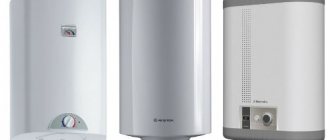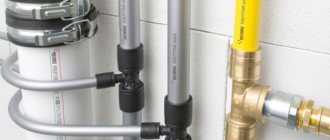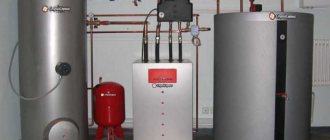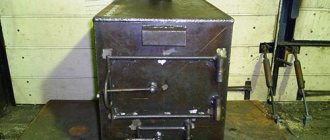Autonomous "Planar" (air heating device for cars) is produced in Samara. Even in the most severe frosts, this installation will ensure a comfortable microclimate inside the vehicle. The equipment is easy to maintain, install and repair. Let's consider the features of this heater, as well as consumer reviews about it.
Device
The design of the Planar autonomous system includes a power regulator with a rotary handle, as well as a timer that serves to automatically turn off the device after prolonged operation.
The device is designed in such a way as to ensure autonomous operation at all stages. Automation also monitors the state of each internal element in the current period. Ignition begins only if the control system verifies that all compatible components are in working order. This solution allows you to achieve the highest level of operational safety of the device.
Among all the components of a heating device of this type, several main parts can be distinguished:
- A unit with a control panel is required to control the equipment as a whole.
- The fuel pump serves to supply the required amount of fuel to the working chamber.
- The heating element is necessary to heat the air, which then enters the cabin.
Working with the control panel
In any case, you have to start and shut down the system, change the temperature regime and determine the state of the device. There is a special control panel for this. On the front of the device there is an LED small handle.
Thanks to a small light, you can determine the status of the device. If its color is red, then the heating or ventilation mode is turned on. A flashing LED indicates a malfunction. When the heater is turned off, the light does not light up at all.
The handle on the body is necessary to perform various commands. If it is on the left, then the device is completely turned off. You can start by turning the knob clockwise. Depending on the position of the handle, the system will operate in a certain power range.
Principle of operation
The Planar autonomous system operates on the principle of sucking the surrounding air mass into the inside of the heating compartment. When fuel burns, energy is released that heats the air, which, in turn, is supplied inside the cabin.
A significant advantage of the heater in question is the ability to adjust the power. To do this, use a special handle that can be easily rotated and locked in the required position. After setting the desired mode, the device will automatically support it. When the maximum temperature level is reached, the device will turn off and activate at the minimum.
General description of the working process of the Planar autonomous system:
- At the first stage, the combustion compartment is purged.
- Next, the glow plugs are heated to the set temperature.
- The required portions of the air-fuel mixture enter the inner part of the working chamber.
- The fuel begins to burn.
- The candle maintains combustion until the thermal process stabilizes in the specified mode, after which it turns off.
Peculiarities
To maintain the resulting flame within normal limits, its intensity is controlled by a special sensor. If the temperature maximum is exceeded, the control unit deactivates combustion.
Despite the high level of automation, installing the Planar autonomous system requires turning off the device manually. After this, the combustion compartment begins to ventilate, and the fuel supply stops completely.
Fuel enters the heater chamber, as a rule, directly from the vehicle’s fuel tank. Another way to supply an autonomous vehicle is to have your own tank in which the fuel supply necessary for operation is stored.
The unit is powered directly from the vehicle battery.
Features and benefits
The “Planar” autonomous vehicle is manufactured in Samara at the “Advers” enterprise. The company is engaged in the production and sale of various climate control equipment, which is in great demand in Russia. The main advantage of the company's products is affordable prices and high quality equipment.
Autonomous heaters can perform their functions efficiently and reliably even at outside temperatures down to -45°C. Also among the advantages of the device is its compact size. The heater will not take up much space in the car interior. The use of the device is greatly simplified due to the fact that the system is equipped with a remote control. Using it, you can turn the device on and off, as well as change various battery modes.
All products that are manufactured have the necessary certificates that fully confirm safety and compliance with quality standards. The Planar autonomous vehicle consumes a small amount of fuel during operation, which ensures a long period of use. Installation can be done independently. This allows you to save significantly.
Also, another important advantage that the Planar autonomous vehicle has is the price. For a diesel model with a power of 7.5 kW it is 28,300 rubles. This is much lower than the cost of similar products from European manufacturers.
Errors in the Planar autonomous vehicle
The car heating device in question in winter is very useful and sometimes irreplaceable. However, some motorists are in no hurry to install it, fearing incorrect operation if unusual situations arise.
I would like to note that the developers took into account all possible features of operating the device in various conditions. For example:
- The operation of the heater is constantly controlled automatically. When a malfunction occurs, the red or yellow LED indicator lights up.
- In case of excessive heating of the heat exchanger, the control unit will simply turn off the device.
- If the Planar autonomous system does not start, the automation will make several retries. In case of failure, a warning is issued about the problem that has occurred.
- Sometimes combustion in the working chamber may stop spontaneously. This also leads to automatic shutdown of the burner and the entire appliance.
Installation of the Planar air heater on the cabin and booth
And again it’s winter, again, every year it’s the same thing... minus overboard, the transit in the booth, and a traffic jam right in front of the entrance.
To avoid financial losses (calculate the cost of your cargo!) and lost customers, we suggest installing one heater per cabin and van. No, you understood everything correctly. ONE heater and you have a warm cabin and cargo compartment with above-zero temperatures.
If you transport fruits, drinks, medicines, paints... anything that can be damaged by cold, then this is the solution for you!
It's simple. There is a heater in the cabin, and from it there is wiring to the kung. The choice of heater is yours. This can be either already installed on your vehicle (please consult with the technical department! There are restrictions!), or purchased from our service center. Installation specialists are certified for such manufacturers as Webasto, Eberspecher, Teplostar. Components are in stock and always available, which reduces installation time.
The benefits and practicality of such a solution can be made by a simple arithmetic calculation:
Let's give an example of the most popular heater in Russia PLANAR
- 17,500 rubles - cost of the heater
- 4000 rubles - cost of the second installation
- The rest of the installation amount (4000) is spent on the complexity of installation and components (deflectors, splitters, corrugations, etc.)
Total installation 6000+4000=10,000
Clearly. So is it worth buying another heater and paying for its installation if there is a practical solution from a service provider?
As far as we know, such an anti-crisis proposal in Russia (and we are not afraid to say that in the entire northern hemisphere) exists only in the service sector. It would seem that the solution to dividing warm air into two closed volumes from one heater lies on the surface, but the “dog is buried”, as usual, in the details... components and experience. Behind the simplicity of the design is the serious mathematics of our engineers and our own production base. Therefore, the efficiency of the heater tends to the absolute and therefore your savings too.
It is worth mentioning the versatility of such a device. During the entire period of operation of the service center, we have never encountered vehicles whose design would not allow the installation of one heater in both the cab and the van. I would like to note that the brand of your car does not matter. Professional components allow you to distribute heat flows to ANY CAR
But! Progress does not stand still and perhaps somewhere and some vehicle may turn out to be an insoluble problem for our service center. For such technical exotics, it is possible to consult by phone: +7-919-123-53-20
Our engineer will answer any question and help you choose the optimal equipment for a specific model
Reliable and simple design for very little money and plus a guarantee for all work.
Each car requires an individual approach (the geometry is different, the principle is the same), so let’s use the Hyundai Porter as an example. There is no need to comment on the photographs. Everything is clear to professionals, but people who are far from the topic can call the Comfort Auto installation center and receive complete information directly from our engineer.
Recommendations
It is worth noting that correct operation of the control unit of the autonomous heating installation “Planar” is possible only if the permissible voltage limits are observed:
- On-board indicator 12 V (model 4DM-12) - from 10.5 to 16 V.
- Voltage 24 V (modification 4DM-24) – from 20.5 to 30 V.
Constant power surges are very unsafe. Often the cause of overheating is due to improper installation of equipment. In particular, this happens if the heater inlet and outlet are blocked.
Autonomous car "Planar": reviews
Among users, especially those who spend a lot of time on the road, the device in question is popular. Car owners note the ease of installation and maintenance, reliability and low cost compared to foreign analogues.
Consumers especially highlight the following advantages of the device:
- The ability to route air ducts into the cargo area, which allows heating not only the cabin, but the entire vehicle.
- High operating efficiency even in frosts down to -20 degrees.
- Economical consumption of fuel and battery life.
- Acceptable power parameter.
- Unlimited operating life of the device.
Trust the professionals
You can try to install the Planar autonomous interior heater yourself, but it is better to seek help from specialists. This way you can insure yourself against damage caused by improper installation. Our company installs the Planar heater in the interior. We guarantee high-quality and fast installation of the device in accordance with safety regulations, manufacturer requirements and the characteristics of your vehicle.
Due to its design features, the Planar air heater can be installed directly into a heated cabin. This significantly increases the efficiency of the device, since heat loss is minimized. Most domestic analogues must be installed outside. Heaters from foreign manufacturers can be installed inside the cabin, but with comparable product quality, their cost is 2-3 times higher.
We offer a choice of Planar heaters in 12 and 24-volt versions. This allows you to install the device not only on domestic cars, but also on foreign ones.
By contacting us, you can be sure of the high quality of work and the efficiency of its implementation.
"Climate-Service" is a certified center
All specialists of our center have 5 to 15 years of experience in the auto industry class=”aligncenter” width=”564″ height=”800″|fcw3qayjh5a| src=”https://webastospb.ru/images/sertif/2.jpg” class=”aligncenter” width=”566″ height=”800″|fcw3qayjh5a| src=”https://webastospb.ru/images/sertif/3.jpg” class=”aligncenter” width=”566″ height=”800″[/img]
or leave a request:
Reviews from our clients
Competent craftsmen, did the job well. On the plus side: you can sign up online through the website, they explained what the problem was, and justified the cost of the work.
Nikolay B.
May 15, 2018
I repaired an Eberspacher heater in this workshop. The prices are reasonable, the repair took 2 days. I was pleased. I will recommend it to my colleagues.
Evgeniy S.
06/07/2018
In July I repaired the air conditioner on the Sprinter. They replaced the tubes and refilled them. So far they are running without any complaints. There is no need to go back and finish something. Thank you !
Vyacheslav R.
07/03/2018
Competent craftsmen, did the job well. On the plus side: you can sign up online through the website, they explained what the problem was, and justified the cost of the work.
Nikolay B.
May 15, 2018
I repaired an Eberspacher heater in this workshop. The prices are reasonable, the repair took 2 days. I was pleased. I will recommend it to my colleagues.
Evgeniy S.
06/07/2018
In July I repaired the air conditioner on the Sprinter. They replaced the tubes and refilled them. So far they are running without any complaints. There is no need to go back and finish something. Thank you !
Vyacheslav R.
07/03/2018
We are easy to find
Application
The Planar car heater is widely used for installation in vehicles intended for transporting drinks, medications, technical fluids, people, and animals. The units are also actively used by drivers of special equipment (cranes, cast irons, etc.).
The use of the heater in question does not require starting the power unit of the machine. This feature allows you to use it during overnight stays and long stays. There are several modifications on the market that differ in power, design features and some other parameters. The most popular model is considered to be 4DM-24. This is due to the fact that its installation is possible in large vans, thermal booths, change houses and other analogues. It is noteworthy that during operation the heater makes virtually no noise.
Prices for installing car heaters
| Name of works | LF | Cost of work |
| Departure to the customer | 1,0 | 1,000 rub. |
| Additional services related to heater installation | 1,0 | 1,000 rub. |
| Routing of air ducts throughout the vehicle interior (van) | 1,0 | 1,000 rub. |
| Installing an air heater in a truck cab | 6,0 | 6,000 rub. |
| Installing an air heater in a van | 7,0 | 7,000 rub. |
| Installing an air heater on a minibus | 6,0 | 6,000 rub. |
| Installation of an air heater on special equipment | 7,0 | 7,000 rub. |
| Installing an air heater on a boat | 10,0 | 10,000 rub. |
| Installing an additional fuel tank | 1,0 | 1,000 rub. |
| Installing a liquid heater on a vehicle without climate control | 8,0 | 8,000 rub. |
| Installing a liquid heater on a vehicle with climate control | 10,0 | 10,000 rub. |
| Installation of a liquid heater with a power of 16-35 kW | 11-22,0 | 11,000-22,000 rub. |
| Installation of a liquid heater on special equipment | from 7.0 | from 7,000 rub. |
Cash
Visa and MasterCard cards
Cashless payments
Sign up!
Safety
The operation of the Planar heating device requires compliance with certain safety rules. Among them:
- Re-activation of the device after it has been turned off is allowed no earlier than 10 seconds.
- During the purge cycle, turning off the power is prohibited.
- If welding work is carried out in the body area, the heater must be disconnected from the network.
- It is also recommended to turn off the device when refueling the vehicle.
- Repairs to the Planar battery should be carried out by a specialist; do not try to do it yourself.
- Do not operate the heater indoors.
- To be able to put out a fire, you must have a working fire extinguisher.
- It is prohibited to lay fuel pipes inside the passenger compartment; they must be well insulated from the outside.
Operating principle
This air autonomous heater works as follows. So, using a fuel pump, fuel is supplied to the Planar combustion chamber. The heat generated from diesel combustion is then transferred to the heat exchanger. Then the radiator is blown and hot air enters the cabin. Exhaust gases are removed from the car's interior (through a pipe, as in the photo below).
The device is also suitable for use in enclosed spaces. Diesel fuel is used as fuel for Planar. As already noted, the equipment can operate completely autonomously – the car engine does not need to be running. The peculiarities of the installation are that the “hairdryer” itself is located inside the cabin, and the fuel tank is located outside.
Basic problems and recommendations for troubleshooting them
Below are the main malfunctions of the Planar autonomous system and tips for eliminating them (the number of blinks of the LED indicator is indicated in parentheses):
- Heat exchanger (1) overheating. It is recommended to check the working pipes for free passages and the overheating sensor (replace it if necessary).
- Exhaustion of startup attempts (2). Pay attention to the fuel and air supply systems and the gas exhaust unit.
- Appearance of intermittent flame (3). Check the flame sensor and combustion air supply.
- Broken glow plug (4). Check the relevant part and replace it if necessary.
- Malfunction of the flame indicator (5). Measure the resistance in the circuit between the terminals (the indicator should be no higher than 10 Ohms).
- The temperature sensor on the control unit (6) is faulty. A part needs to be replaced.
- Malfunction of the fuel pump (7). Check the electrical wires of the unit for possible short circuits and change if necessary.
- There is no connection between the remote control and the control unit (8). Connectors and wiring need to be checked.
- Overvoltage shutdown (9). Find out the reason that led to the jump.
- Excess of ventilation time (10). Pay attention to the working mixture supply system and gas outlet.
Error numbers and descriptions
If the device does not start, there may be several reasons for this. Problem code - 13. There may be no fuel, the diesel engine may not meet the conditions of use. Low fuel level. The pipeline that removes gases is also clogged, or the air intake system is dirty. The glow plug or its grid may be faulty. The same code indicates a clogged hole in the combustion chamber. You can repair the Planar battery yourself. The manufacturer explains in detail how to fix these problems in the instructions.
Code 20 also indicates that the device does not start. Using this code, the manufacturer recommends checking the fuses located on the power harness. Additionally, it is recommended to check the control panel. There may be no connection between the unit and the remote control.
Code 01 – reports heat exchanger overheating. 08 indicates a leak in the fuel line, a malfunction of the pump or flame indicator. 09 is a failed glow plug. This happens due to short circuits, breaks, or breakdown of the control unit. 05 – failure of the flame indicator for the same reasons as in the previous case. 04 – failure of the temperature sensor.
19 - these are malfunctions associated with the fuel pump due to open circuits or short circuits. Planar battery error codes 12 and 15 indicate a malfunction of the voltage regulator or battery. In both the first and second cases, the problem is related to the supply voltages.
Code 16 indicates insufficient ventilation. It does not provide cooling of the combustion chamber in the heater and the heat exchanger. Also, the flame sensor did not cool down during purging.
Planar autonomous vehicle errors with code 10 are problems with the air blower motor. It does not reach high speeds due to high friction in the bearings. 27 – the electric motor is jammed and does not rotate. 28 – the motor rotates, but at one constant speed. Autonomy codes "Planar" 02 - overheating according to the temperature sensor.











